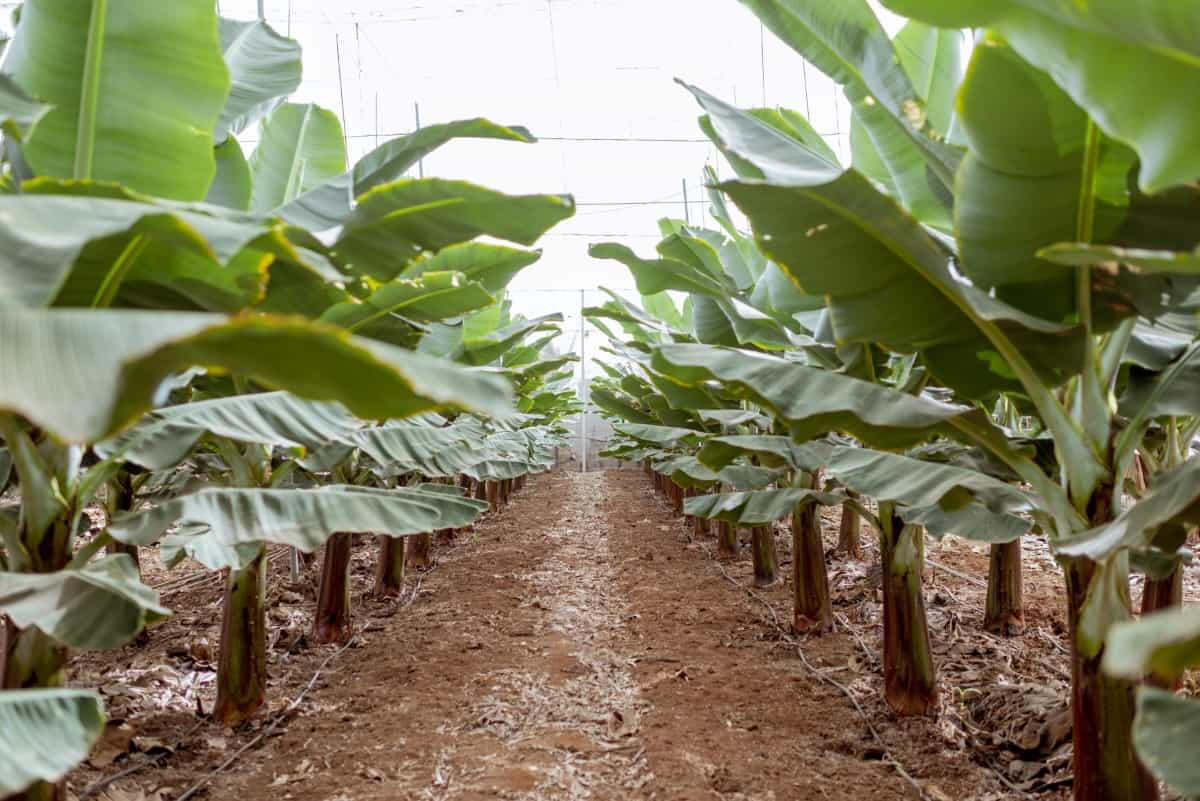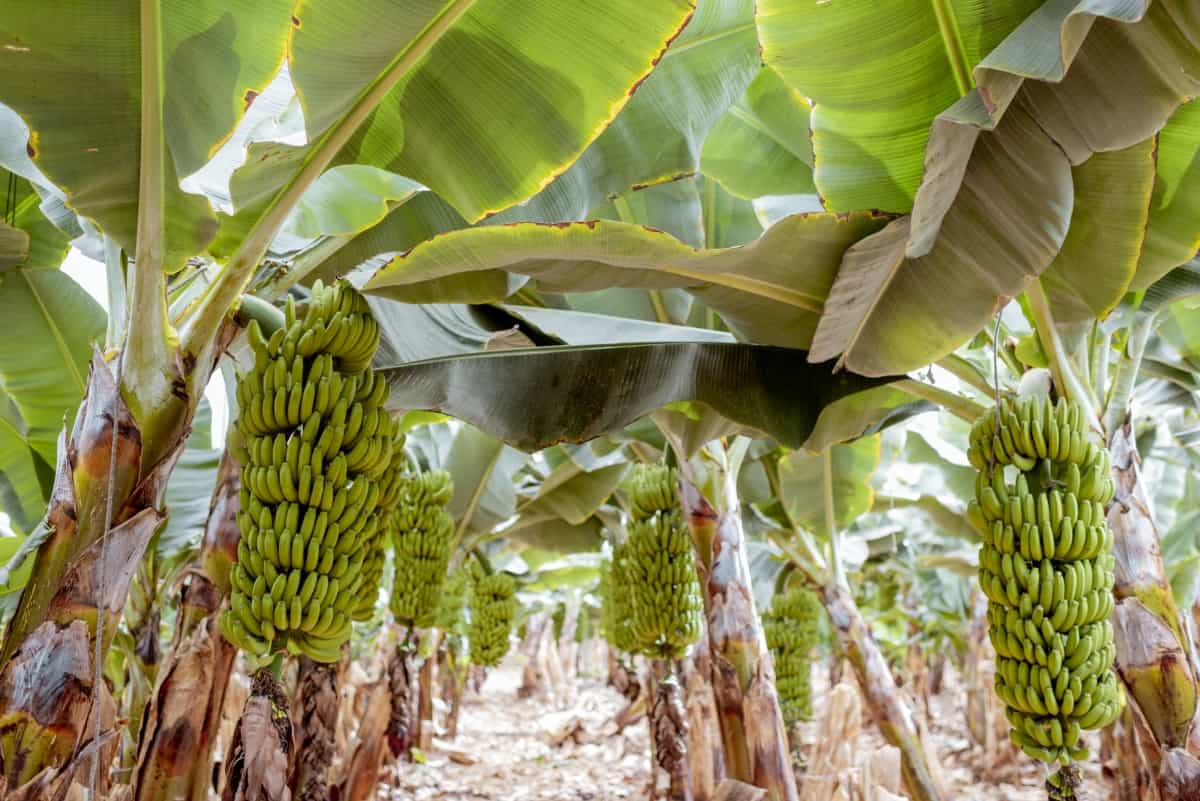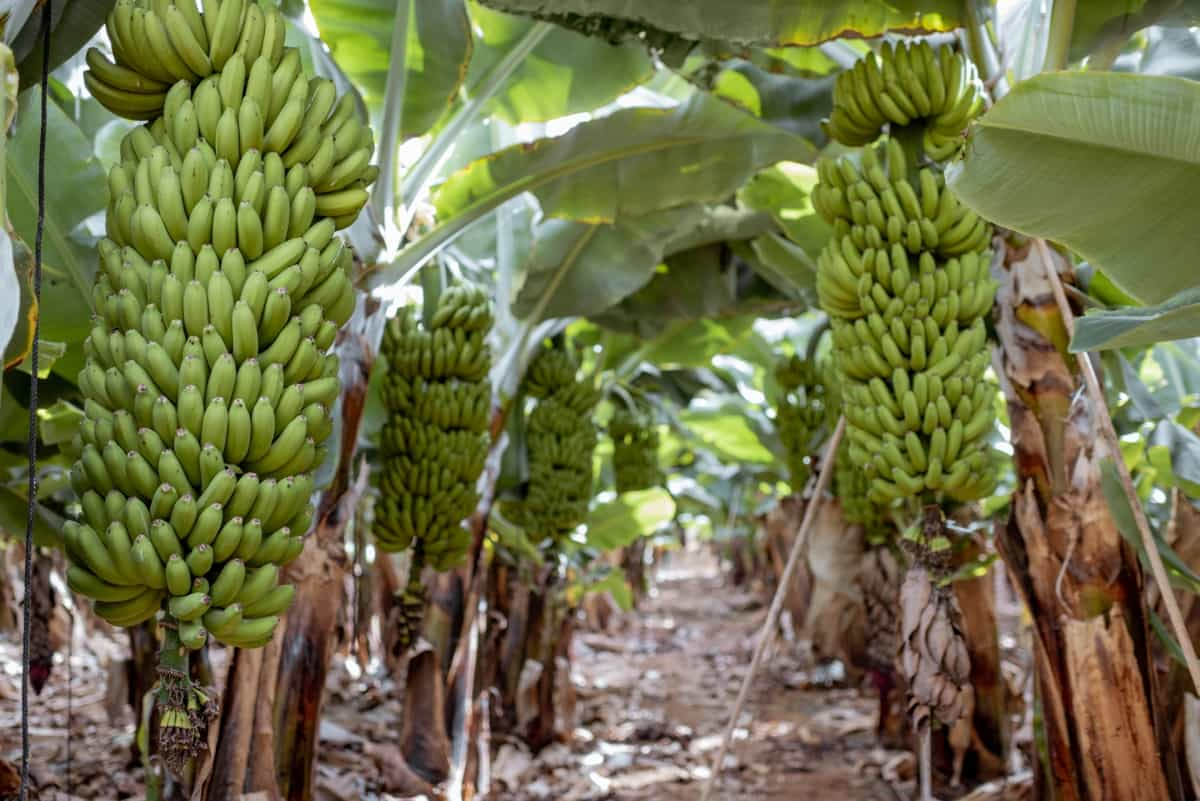Banana plantations are an essential part of agriculture in many tropical regions. To maximize productivity and sustainability, farmers often turn to intercropping, which involves growing different crops together. The best intercrop for banana plantations can vary based on the specific goals and conditions of the farm. Techniques like intercropping banana with papaya, banana intercropping with potato, and incorporating other crops offer numerous benefits.

Modern banana farming is increasingly focused on maximizing the use of land, and intercropping plays a crucial role in this. A typical banana plantation per acre can be transformed with the right intercrop choices. Effective banana management practices, as detailed in various banana cultivation PDFs, include considerations for banana plantation spacing and the use of cover crops. In this article, we’ll explore various intercropping strategies that enhance the efficiency and productivity of banana orchards.
Best Intercrops for Banana
Leguminous Intercrops for Banana Plantations
Leguminous plants are excellent companions for bananas in plantations. They not only improve soil fertility by fixing nitrogen but also contribute to the overall health of the soil. Peanuts, for instance, are an ideal choice as they thrive in similar conditions to bananas and can enhance soil quality.
Soybeans are another great option; their deep roots help improve soil structure, and they add valuable organic matter. Cowpeas, with their drought-resistant qualities, make an excellent intercrop in regions with water scarcity. These legumes not only boost soil health but also provide additional income sources for farmers, making them a practical choice for sustainable banana cultivation.
Cover Crops as Intercrops to Enhance Banana Plantation Soil
Cover crops are essential for preserving soil health in banana farms. They shield against erosion, enhance soil quality, and contribute organic material. Among the top choices for banana plantations are rapidly growing velvet beans, which offer robust ground coverage. Sunnhemp is another effective cover crop known for its ability to suppress weeds and enhance soil nitrogen content.
Mucuna pruriens, commonly used in modern banana farming, is excellent for improving soil fertility and texture. By incorporating these cover crops as intercrops, farmers can significantly improve the soil quality of their banana plantation, leading to better yield and sustainability.
Nitrogen-Fixing Intercrops Plants to Boost Banana Yield
Nitrogen-fixing plants are vital in banana plantations as they naturally replenish soil nutrients, reducing the need for chemical fertilizers. Alfalfa is a popular choice due to its deep-rooting system that improves soil structure and its ability to fix nitrogen efficiently. Lentils, being short-season crops, can fit well in the banana plantation cycle, contributing to soil health without interfering with the main crop.
Clovers, with their dense growth, not only fix nitrogen but also help in preventing soil erosion. These nitrogen-fixing intercrops not only enhance the soil’s fertility but also contribute to a more eco-friendly approach to banana cultivation.
Beneficial Insect-Attracting Interplants for Bananas
Attracting beneficial insects to banana plantations is crucial for natural pest control and pollination. Marigolds are a popular choice as they attract beneficial insects and can deter certain pests with their strong scent. Sunflowers, with their tall and striking presence, attract a variety of beneficial insects and birds, which help in pest management.
In case you missed it: Integrated Pest Management in Banana Plantations: IPM Strategies in Banana Farms

Lavender, known for its pleasant aroma, attracts pollinators and beneficial insects, improving the overall health of the banana plantation. These plants not only add aesthetic value to the plantation but also play a crucial role in maintaining a healthy ecosystem within the orchard.
Herbaceous Intercrops to Control Weeds in Banana Plantations
Herbaceous intercrops are an effective natural way to control weeds in banana plantations. Sweet potatoes, with their dense foliage, can effectively suppress weed growth while providing an additional crop for harvest. Pumpkins, growing low to the ground, create a natural mulch that prevents weeds from getting sunlight.
Watermelons, spreading across the ground, also act as a living mulch, reducing the need for manual weed control. These herbaceous intercrops not only keep the weeds at bay but also help conserve soil moisture and improve the microclimate around the banana plants.
Interplanting Fruit Trees with Bananas for Diversification
Interplanting bananas with other fruit trees can lead to diversification, making the plantation more resilient and productive. Mango trees, with their deep root systems, do not compete much with bananas for nutrients and provide shade and shelter. Citrus trees, being relatively small, can be easily integrated into banana orchards without causing overcrowding.
Papayas, growing quickly and having a shorter lifespan, are ideal for intercropping with bananas, as they can be harvested before the bananas reach their full height. This strategy of interplanting different fruit trees not only diversifies the crop yield but also ensures a more stable income for farmers throughout the year.
Root Vegetables as Intercrops in Banana Farms
Root vegetables are excellent intercrops in banana farms due to their below-ground growth patterns, which minimizes competition for space and resources with banana plants. Carrots, with their deep roots, help aerate the soil and can be harvested without disturbing the banana roots. Beets, thriving in well-drained soil, are another suitable choice, as they can efficiently utilize the space under banana canopies. Radishes, fast-growing and easy to harvest, also make great intercrops, helping to break up compact soils and improving overall soil health.
In case you missed it: Common Mistakes to Avoid in Banana Farming: A Guide for First-Time Banana Farmers

Medicinal and Aromatic Plants as Interplants in Banana Plantations
Medicinal and aromatic plants can be beneficial interplants in banana plantations, offering both economic and ecological advantages. Aloe vera, known for its medicinal properties, thrives in similar climatic conditions as bananas, making it a compatible intercrop. Lemongrass, with its strong fragrance, can help repel certain pests while also being a valuable cash crop. Basil, attracting beneficial insects and pollinators, enhances biodiversity and contributes to the overall health of the plantation.
Grass Species as Intercrops for Erosion Control in Banana Farms
Grass species are crucial intercrops for erosion control in banana farms, particularly in hilly or sloped areas. Vetiver grass, with its deep and strong root system, is highly effective in stabilizing soil and preventing erosion. Bermuda grass, forming a dense mat over the soil, protects against soil erosion and helps in water retention. Napier grass, commonly used in tropical agriculture, not only controls erosion but also can be used as fodder, adding an extra layer of utility to the plantation.
In case you missed it: How to Create a Banana Farming Business Plan: Optimizing Banana Farm Operations

Conclusion
Intercropping in banana plantations is a multifaceted strategy that enhances soil health, increases biodiversity, and improves overall crop yield. Whether it’s through leguminous plants, cover crops, or the integration of fruit trees, root vegetables, medicinal plants, or grass species, intercropping offers a sustainable and productive approach to modern banana farming. By adopting these practices, farmers can ensure the longevity and prosperity of their banana orchards, making them more resilient and environmentally friendly.
- Feed Your Flock for Less: Top 10 Tips to Save on Chicken Feed
- Ultimate Guide to Ossabaw Island Hog: Breeding, Raising, Diet, and Care
- Hatching Answers: The Top 10 Reasons Your Chickens Aren’t Laying Eggs
- Eggs and Economics: Breaking Down the Cost of Raising Backyard Chickens
- Defend Your Greens: Proven Methods to Keep Iguanas Out of Your Garden
- Ultimate Guide to Cinnamon Queen Chicken: A Comprehensive Guide for Beginners
- Ultimate Guide to California Tan Chicken: Breeding, Raising, Diet, Egg-Production and Care
- Ultimate Guide to Marsh Daisy Chicken: Breeding, Raising, Diet, and Care
- 10 Types of Chicken Farming Businesses You Can Start for Profits